Halloween is the holiday that showcases creepy critters like bats and spiders. Whether it's a fierce look, rapid movement, or a scary sound, some critters just give us the creeps. Discover three that are just trying to feed themselves or their young in what might be considered the making of a nightmare.
Prionyx Wasps
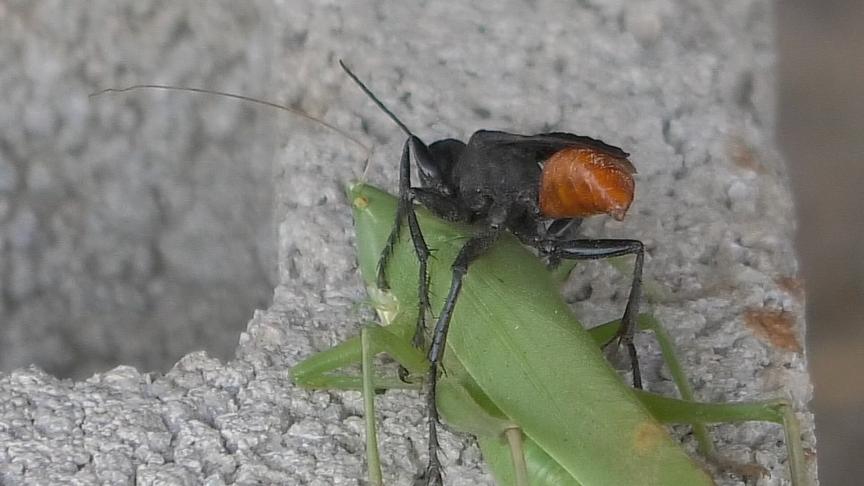
These wasps feed their young a grasshopper diet. They will hunt their prey with an aggressive attack and stings to subdue them with paralyzing precision. While their prey is immobile, they will dig a burrow for their young and return to carry the grasshopper, which is often double their size, back to their chamber. Then they will bury the live grasshopper and deposit an egg on top and close up the chamber. When the egg hatches, there is fresh food waiting for it. The Prionyx wasp differs from other thread-waisted wasps, a group of solitary, burrow digging hunters that dig first and hunt later. The Prionyx will hunt first, and dig later. It's able to haul the grasshopper by grabbing its antennae with its mandibles and straddling it with its pair of two front legs, which are long enough to walk across the ground while carrying its big haul.
Discover more about thread-waisted wasps in Missouri.
Antlions
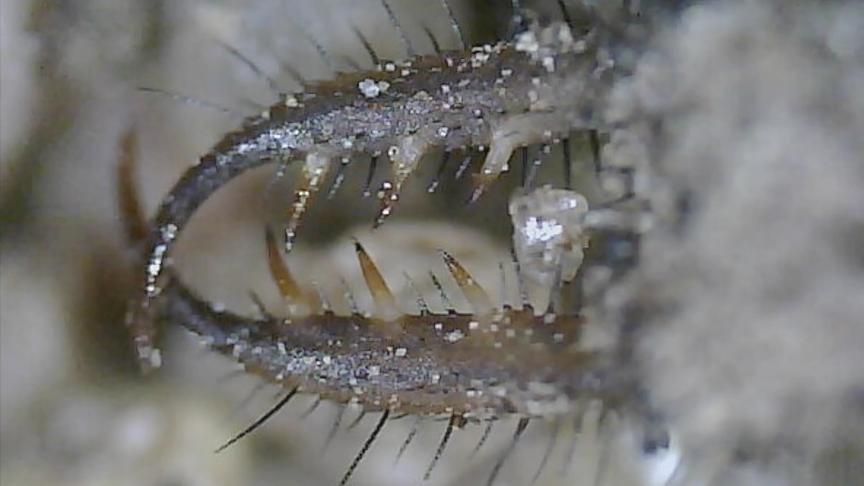
In their adult form, antlions are weak predators that appear quite fragile. However, their larvae, or immature offspring can look like a nightmare for their prey. They are a common Missouri insect that lives most of their early life in a pit. Often called doodlebugs, a harmless sounding name, their appearance and trapping technique is fierce. Antlion doodlebugs will use their razor sharp mandibles and head like a shovel, digging a pit while walking backwards. Then they will wait at the bottom for ants or other prey to fall right into their jaws, where they will quickly be seized, buried, paralyzed, and drained. Should one escape at first grasp, the antlion will shovel sand to knock them back into the pit. If their grip is not tight on the first try, they will toss their prey in the air or beat it against the pit walls until their hold is secure. They may create several pits in their life cycle. Once they've eaten enough, they will make a cocoon and pupate into an adult.
Discover more about Antlions.
Racerunner vs Armyworm
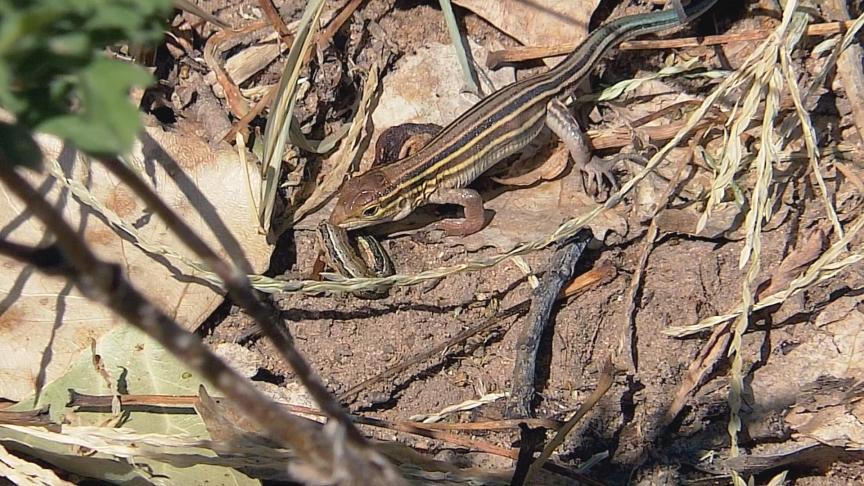
Not everyone is a fan of lizards. Racerunners, also called whiptails, bring a western style to the Show-me State. They are speedy at hunting and escape and reach up to 18 miles per hour when threatened. Racerunners are prey for snakes, birds, and collared lizards. They will eat insects and other invertebrates. Racerunners hunt on hot days in glade type habitats. In the video above, this racerunner is stalking its prey through ragweed. The bluish looking tail is similar to a juvenile, more than twice the length of its body. The armyworm is no match for the stealth of a racerunner. Armyworms are pests that can devour crops and lawns with a military, marching precision, often at night. They have done extensive damage this fall to backyards as well as crops. The racerunner may not get them all, but its got this one under control.
Discover more about racerunners in our Field Guide.
See what creepy critters you can find lurking about this Halloween.
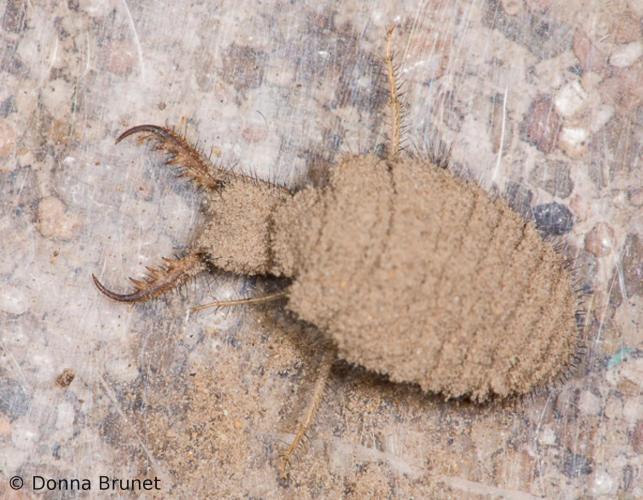
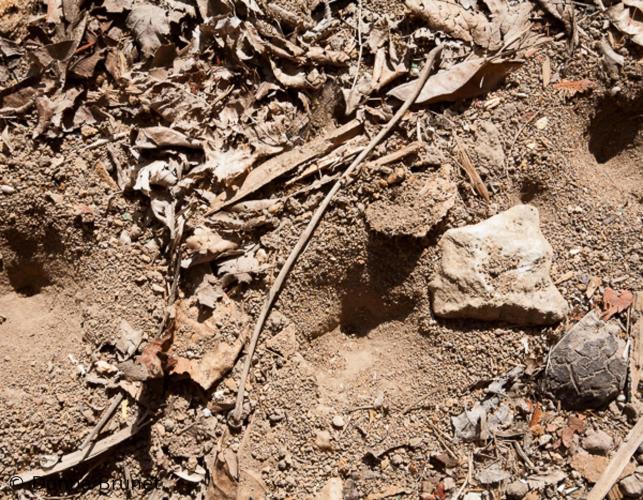
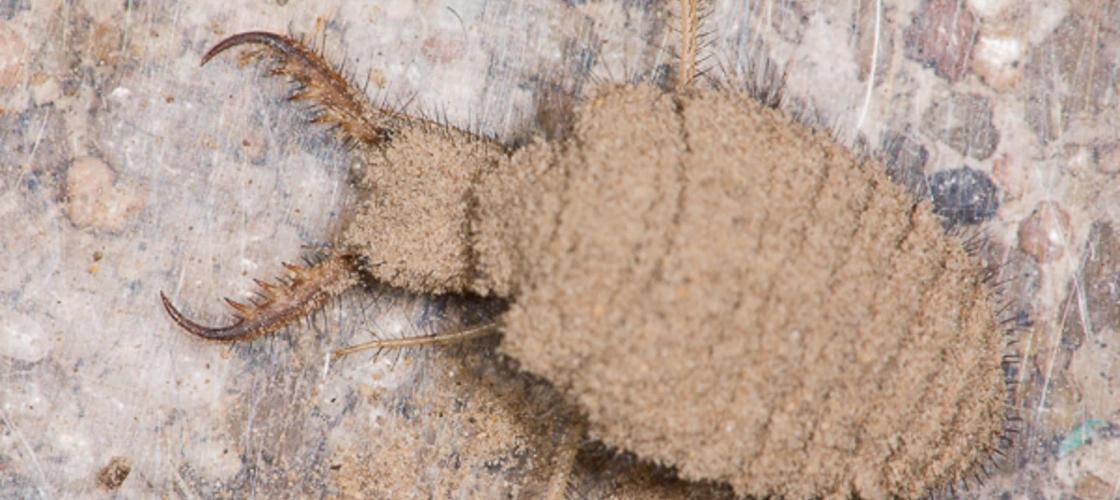
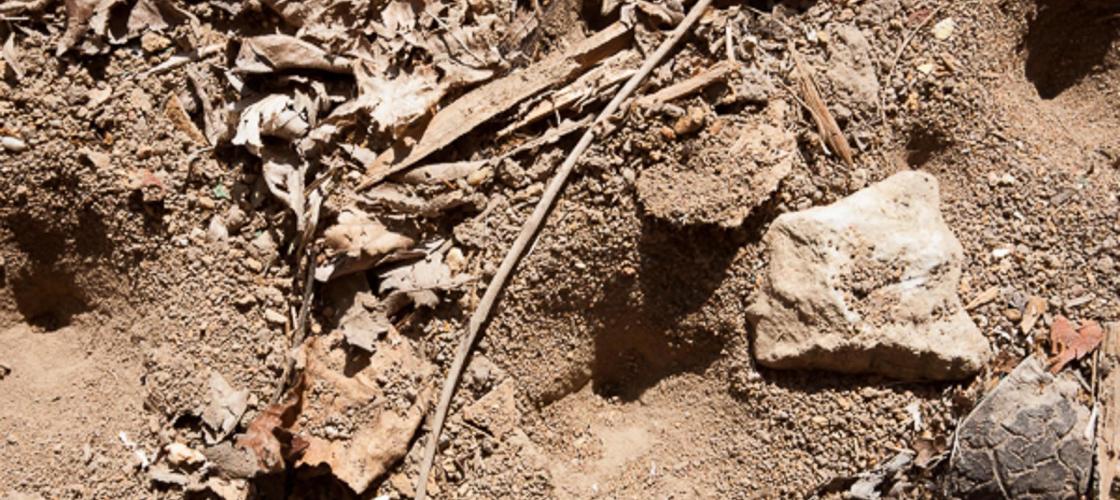
Recent Posts
























